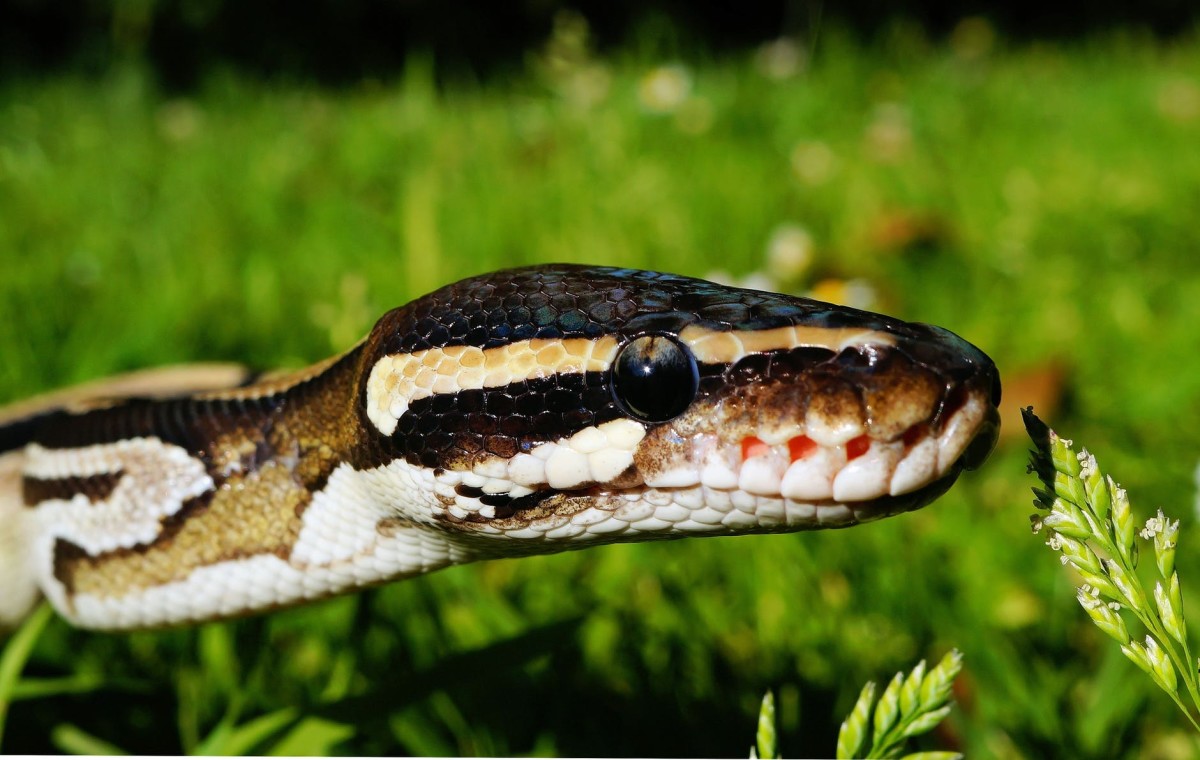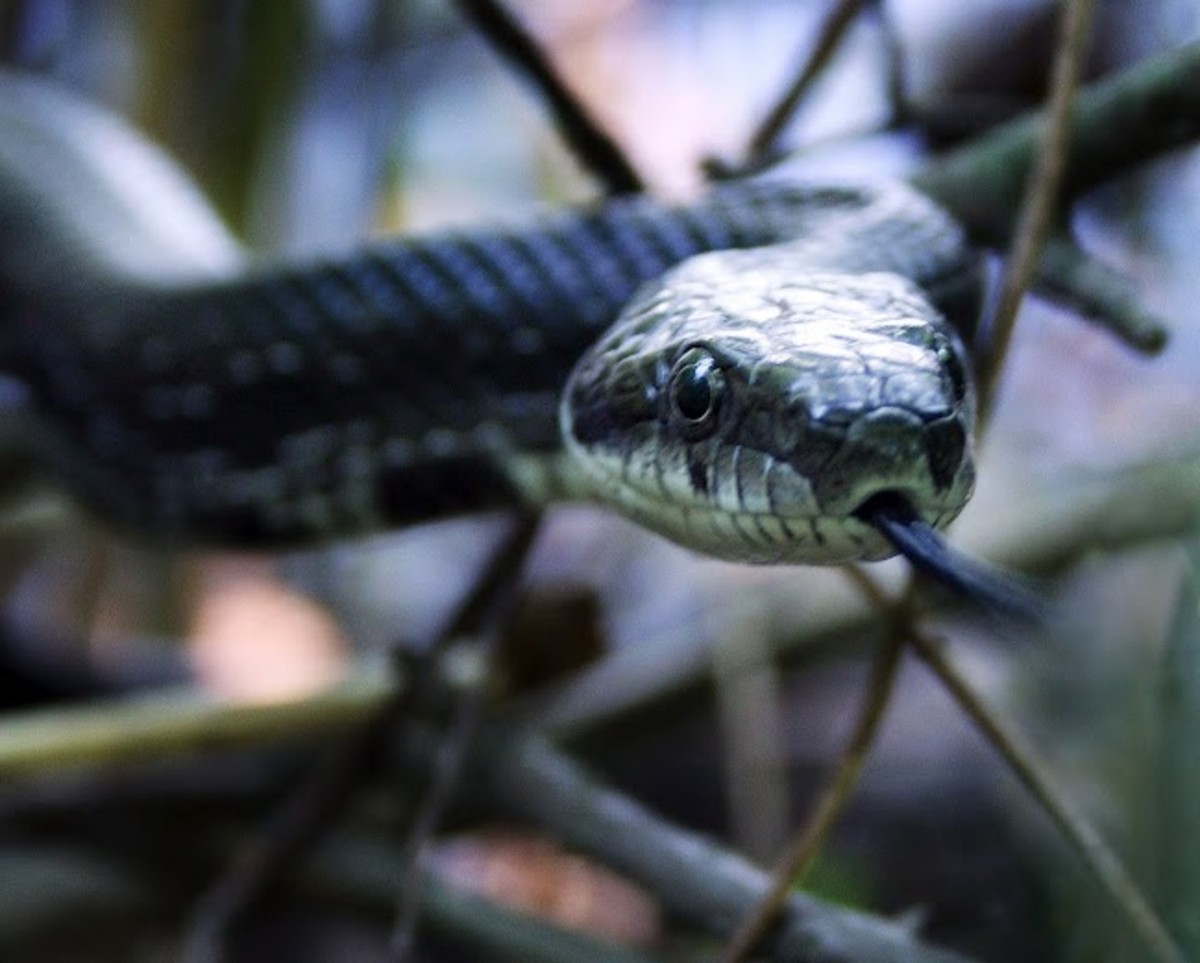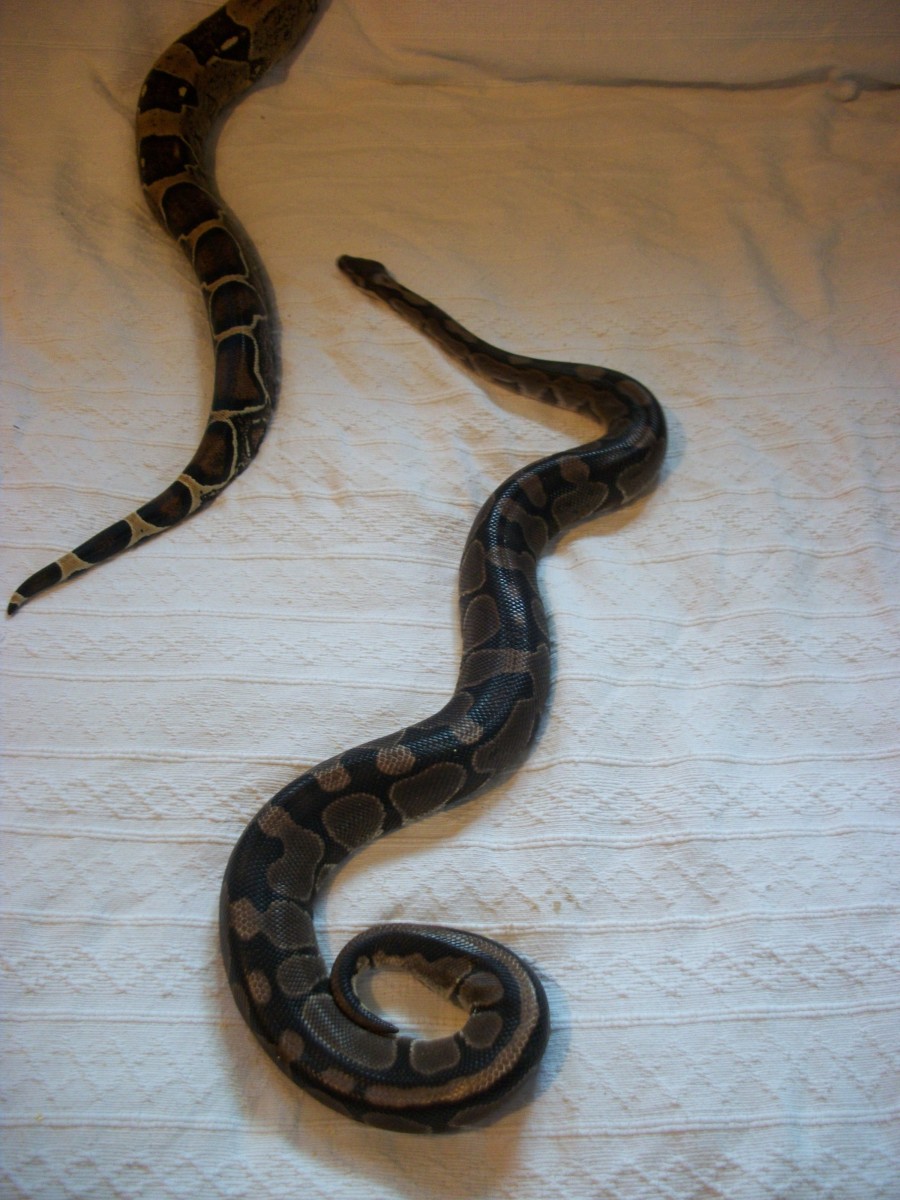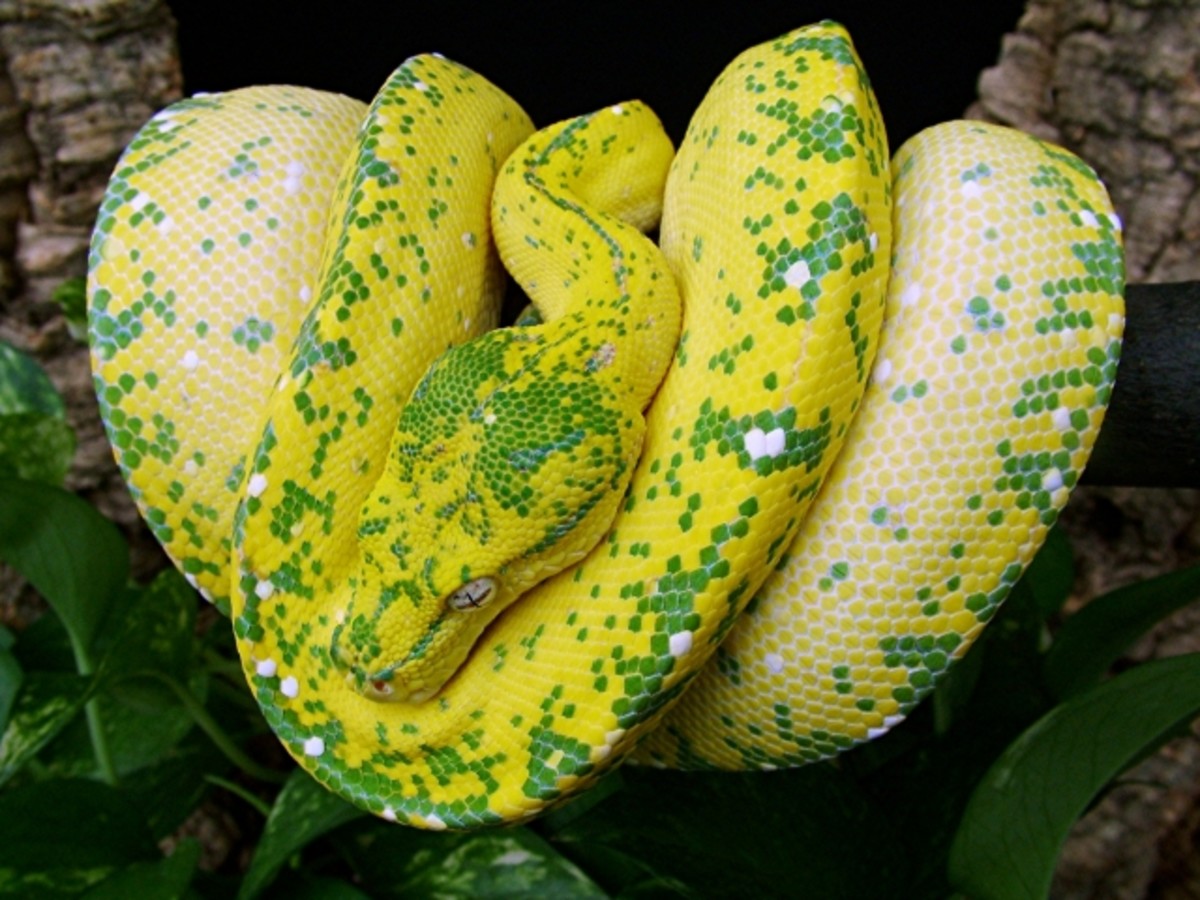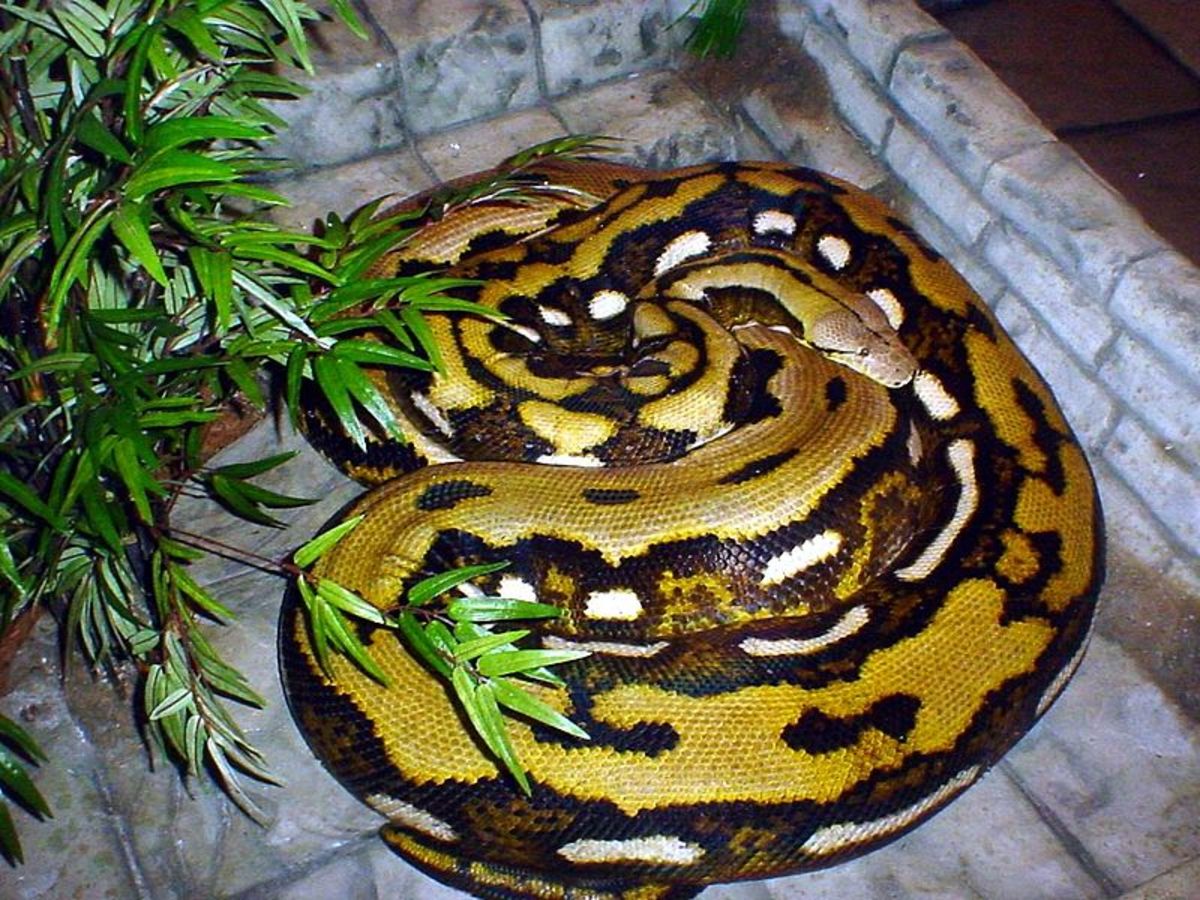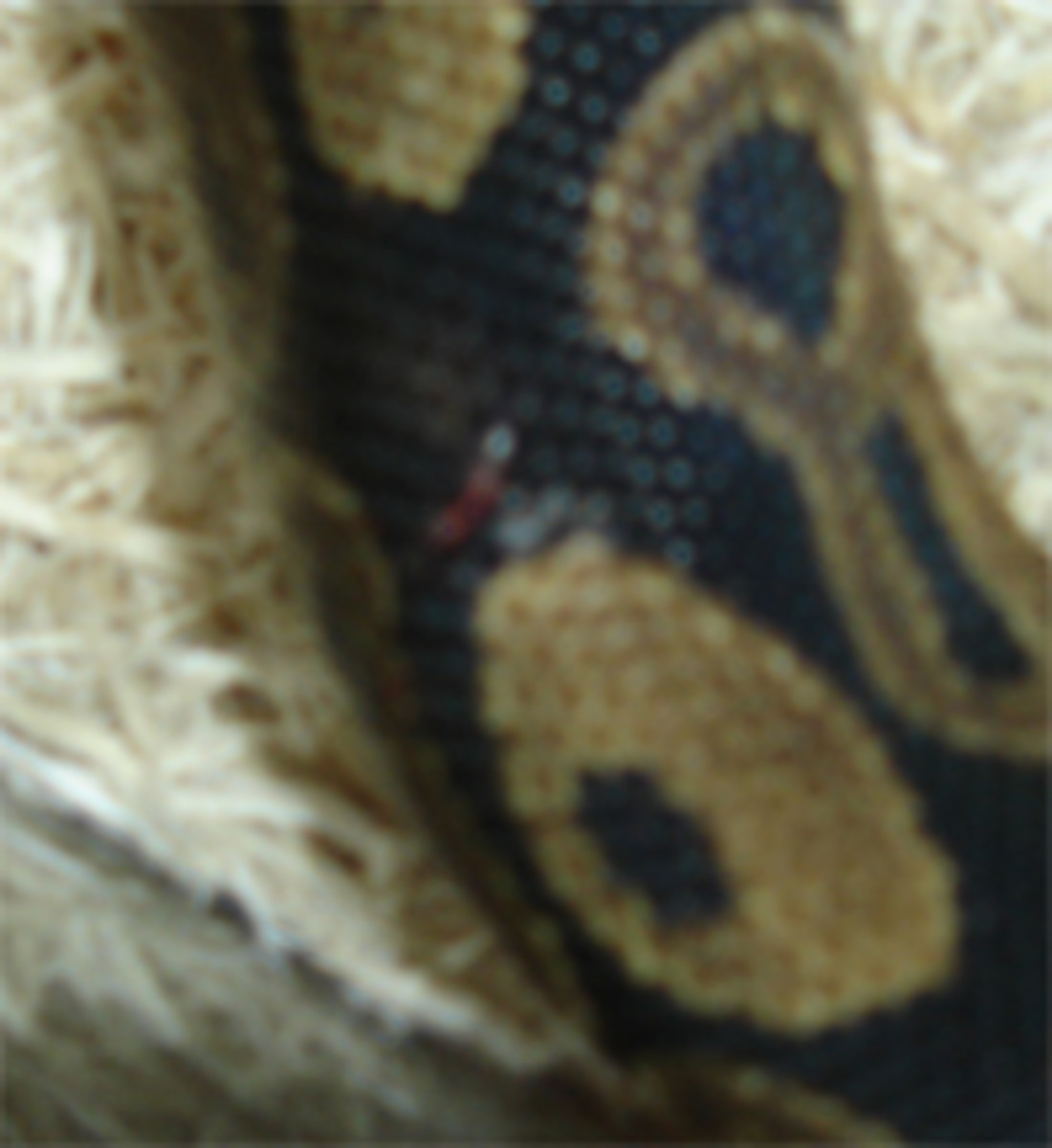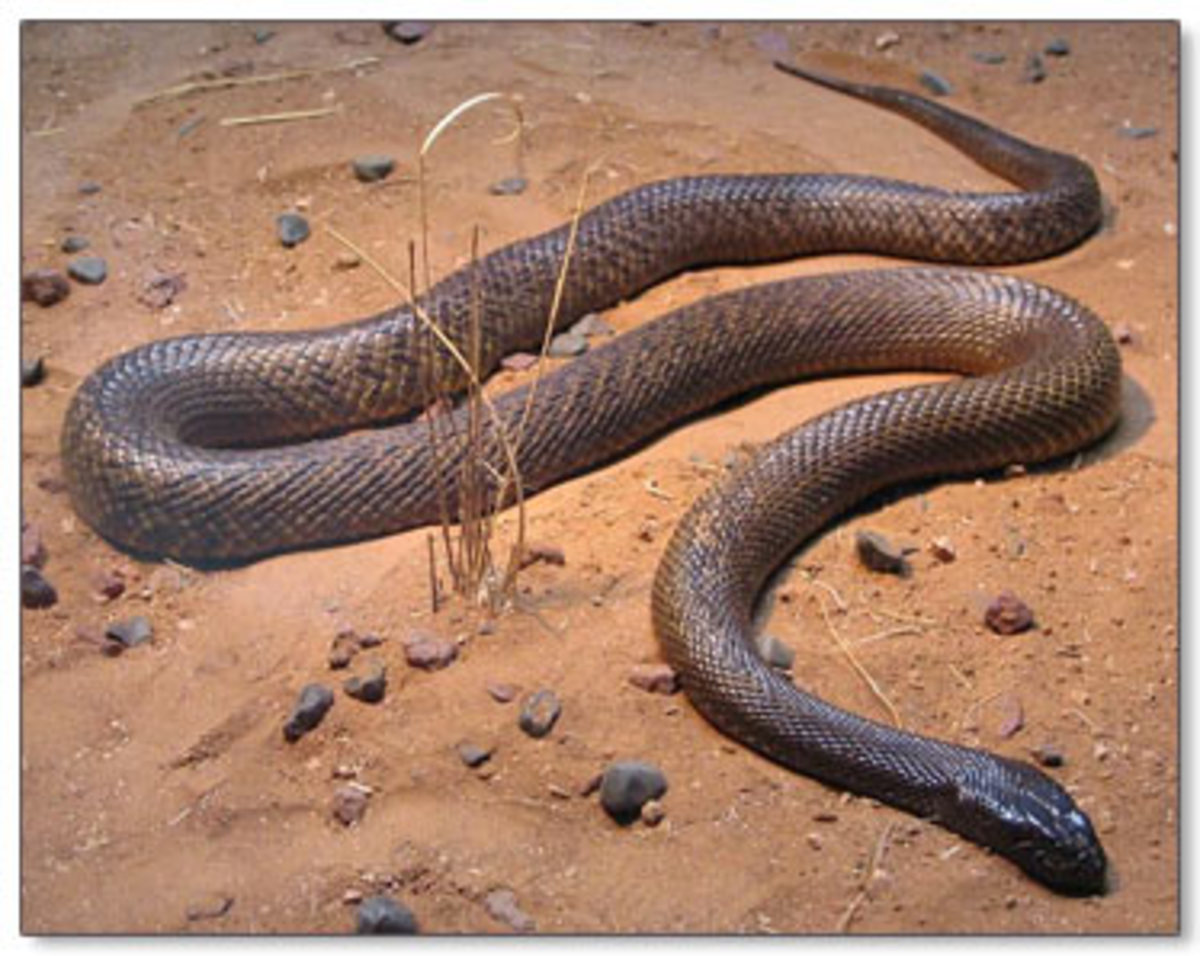Ball Python Care Sheet
Royal Python
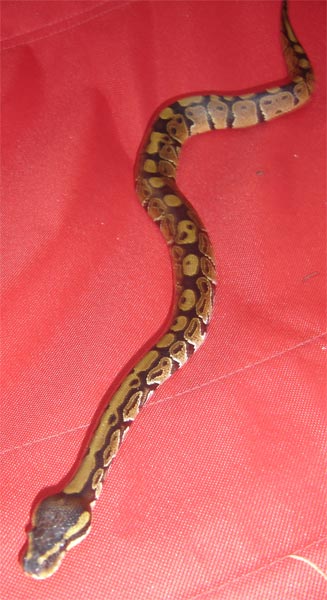
Python regius
The ball python is, also, known as the Royal Python. Both names have their origin. The name "Ball," comes from the snake's tendency to curl into a tight "ball," and the name "Royal" derives from Cleopatra, who supposidly wore the snakes around her wrists.
Ball pythons are a nonvenomous snake that is native to the savannahs and the rain forests of western Africa. They prefer to live in areas of mixed grassland and trees, and are most active at night, spending most of their days hiding in rodent burrows and termite mounds.
Ball pythons are typically light brown-green and black with a tan-yellow underbelly. But, they are available in many morphs such as pie-bald, bumblebee, lesser platinum, mohave, spider, etc.
Books about Ball Pythons
Ball Pythons as Pets
Ball Pythons are one of the best beginner snakes that one can own. They are very docile snakes. Although, as a snake, they have the ability to bite, but very seldom do they.
You should always supervise children when they are handling the snake.
Lifespan of a Ball Python
When kept in an ideal habitat with proper husbandry, ball pythons can live an average of about 20 to 30 years.
To date, the oldest living ball python is recorded at 48 years.
Ball Python Size
Adult ball pythons can range from 3 to 6 feet in length.
The average female will range from 3 to 5 feet, while the average male may range from 2 to 3 feet.
Ball Python Enclosure
Make sure to select a nice glass enclosure that you can fix screen clamps too. Because snakes are wonderful escape artists, you want to be able to fully secure a screen lid on the enclosure.
If you get a baby ball python, do not purchase an aquarium that is too large, as it will overwhelm the snake. 10 to 20 (20"L x 10"W to 30"L x 12"W) gallon aquariums will suffice for snakes that are under 1.5 to 2 feet long.
For adult balls pythons, a minimum of a 30 gallon (36"L x 12"W x 18"T) aquarium will be fine for any male ball python. For females, you may want to purchase something a little larger.
A 40 gallon breeder aquarium works perfect for adult ball pythons.
If you choose to purchase the adult sized enclosure from the start, you may want to invest in aquarium dividers so that you can block off a portion of the cage, as to create a smaller cage size to not stress out the younger snake. But, at the same time, you must remember that snakes are escape artists, and may find a way around this.
Ball Python Set Up
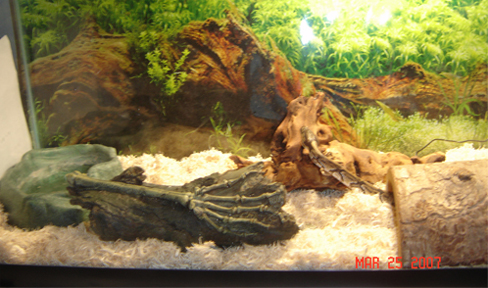
Snake Substrate
It is always recommended to use solid substrates versus loose substrates to prevet the reptile from injesting any of the substrate. You can use paper towels, slate, reptile carpet, or newsprint.
But, if you want a more decorative substrate, you may want to consider aspen, shredded cypress, or fir bark. Just watch any loose substrates, as some will cause humidity levels to rise.
When feeding snakes on loose substrates, you will want to monitor the snake closely, in attempts to prevent any particles from being injested and lodged in the snakes mouth when eating. This can not only cause impaction concerns, but respiratory illnesses, and other health concerns.
As for aspen shavings, monitor any wet spots, which can harbor bacteria and fungal growth, removing it as soon as it is noticed.
Ball Python Set Ups
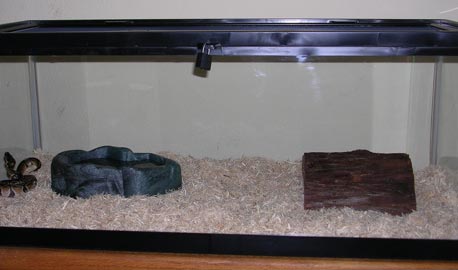
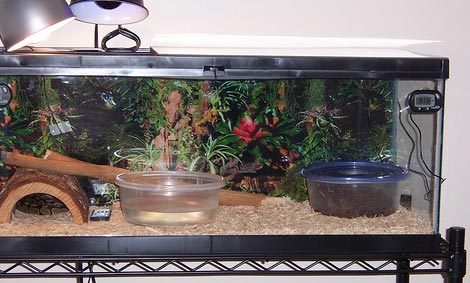
Snake Decor
Ball pythons, being nocturnal, prefer dark places. Make sure that you have at least one hide that they can use as shelter. You can purchase half logs, use empty cardboard boxes, or just any upside down container, can be used as shelter for a ball python.
Any piece of decoration that is meant for a snake to find shelter, must be large enough for it to fit its entire body. Make sure not to use something that is too big for the snake's size, as they do like to sleep in shelters that are close around them. But, make sure that it is not too small either.
Place a climbing branch in the enclosure. Possibly, even add some fake plants around, or near, the branches.
Make sure to leave room for a water dish that is large enough for the snake to soak in.
Lighting
Lighting is not necessary for a ball python enclosure. But, you can use porcelain and metal reflector hoods to help provide the proper temperatures. At night, you can use red lights or any dark night bulb for viewing purposes or to even out the heat requirements, although night bulbs are optional.
Do remember to properly adjust the bulb away from the snake so that it cannot burn itself.
The best way to ensure proper temps is by using an under tank heater.
You do not need basking bulbs or heat emitting bulbs.
Heating
The proper air temperatures for ball pythons range from 85 to 90 degrees during the day.
At night, the air temperatures can be kept around 75 to 80 degrees.
An under tank heater can be placed underneath the enclosure to provide the snake with belly heat necessary for proper food digestion. Do watch out for the temperatures with these heating pads, as they can reach temperatures up to 20 degrees higher than necessary. Using a thermostat will help control the temperatures.
Do not use hot rocks, as they can cause serious thermal burns.
You should never guess the temperatures within the enclosure. Snakes that are too cold, won't eat, and those that are too hot will become ill, and possibly die.
Invest in a digital thermometer with a probe to accurately assess the temperatures.
Humidity
Because ball pythons are native to temperate, arid areas, the enclosure should reflect that. You should maintain an enclosure that is at about 50% humidity.
Make sure to use a hygrometer to measure the humidity levels in the enclosure. When shedding, you can increase the humidity to 60 to 65%. But, you should not have to raise the humidity within the enclosure to assist shedding; if you bathe them in a warm bath the day their eyes clear, they should shed completely within 24 hours.
Ball Python Diet
Ball pythons are constrictors, which means that they subdue their prey by coiling around them in order to suffocate it.
Before you first try to feed your snake, allow it to acclimate to its new home for at least one week.
You can start snakes that are about 15" in length with one pre-killed fuzzy mouse. Smaller sized snakes may require smaller mice. Older snakes may be fed larger, pre-killed mice or rats.
It is always recommended to feed frozen rodents because they can cause serious damage to you snake.
Ball pythons can be very picky eaters, and they can go without food for several months. But, if you notice that you ball python is losing significant weight, you need to consult a reptile veterinarian who can assist you with force feeding your snake (something you shouldn't try alone, especially if you do not have any experience doing it).
Make sure to provide a water bowl in the snake's enclosure. Ball pythons will both drink and soak, possibly even defecate in the water bowl, which is why it needs to be checked daily.
Soaking is good just before a shed. When they eyes clear from their milky or "blue" state, soak the snake in a tub of warm water for ten minutes or so, then lightly dry it off, and return it immediately to its tank; it should shed within twenty-four hours.


